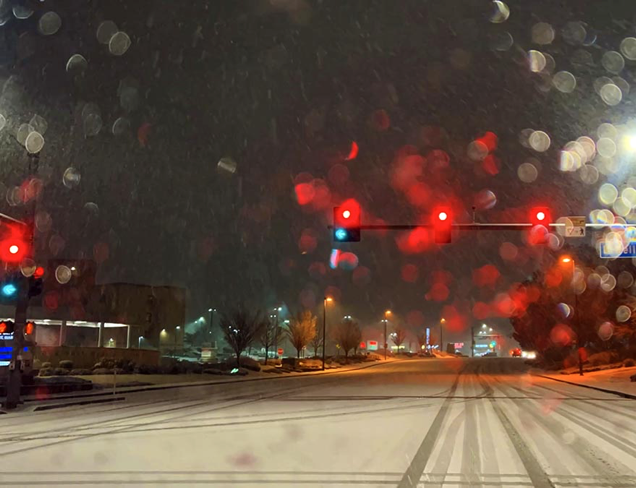Many Americans run into unexpected health care situations, natural disasters or other unforeseeable tragedies that also become financial tragedies.
We’ve seen research showing that nearly half of Americans would struggle to cover an unexpected $400 expense and that 56% of Americans could not cover a $1,000 expense with savings. These numbers and surveys vary in accuracy, but illustrate the reality that many Americans just can’t meet these basic expenses.
Unable to meet these unexpected expenses when faced with emergencies, Americans are forced to borrow at high interest rates, carry credit card debt or spend down their future retirement savings just to survive. Part of the issue is that many people just don’t earn enough to cover all their expenses, save for retirement and have an emergency fund in place.
Part of the new Government 2022 budget Omnibus Bill, which includes the SECURE 2.0 Act focused on enhancing retirement security, aims to address this issue. The bill contains more than 100 retirement- and financial-related provisions, with five provisions aimed at easing penalty taxes and access to retirement funds in cases of emergencies. Let’s take a quick look at these five provisions that could provide some relief in the event of an emergency.
Creation of a Pension-Linked Emergency Account in Retirement Plans
Section 127 of the SECURE 2.0 Act creates an option for employers to offer their non-highly compensated employees access to a pension-linked emergency savings account.
This new type of account would protect the principal and allow up to four withdrawals a year without penalty, tax or fees. The account would cap the employee contribution portion to $2,500, although the employer could set a lower limit. Earnings could also pull the total account value above that number.
Contributions to this account would be treated like a Roth account – they’d be after-tax contributions and their growth would be tax-free. This could create a Roth tax treatment account for employees to save in their retirement accounts to meet emergency expenses in the future. Leftover money would stay in the account year-to-year and could be rolled over to a Roth account or IRA in the future
Exception for Emergency Funds and Unforeseeable Expenses
Section 115 of the SECURE 2.0 Act creates an exception from the 10% early withdrawal penalty tax under section 72(t) for withdrawals pre-age 59½ for an up to $1,000 distribution from a retirement account for unforeseeable or immediate financial needs relating to personal or family emergency expenses.
Typically, if you withdraw money from a retirement account before age 59½, you could be subject to a 10% penalty tax on the taxable portion of the withdrawal unless you otherwise have an exception. This provision would create such an exception for emergencies.
You’re only allowed one up to $1,000 distribution per year. A taxpayer could repay the distribution within three years. The distribution would be subject to income taxes if it was taxable, but not the penalty. No other emergency distribution exception would be allowed in the three-year period following the date of distribution unless the full amount of the original distribution was repaid. This would be effective for distributions starting in 2024.
10% Exception for Terminal Illness
Section 326 of the SECURE 2.0 Act creates another 10% penalty tax exception for early distributions to individuals suffering from a terminal illness.
This exception would not be capped at any dollar amount, and the 10% penalty tax will be waived if the account owner was suffering from a terminal illness. This makes sense and aligns with other penalty tax exceptions, like those for disability and death.
This can provide a tremendous amount of relief and peace of mind for families and individuals suffering from a terminal illness to know they can access these funds without penalty tax after the passage of the bill.
10% Exception for Survivors of Domestic Abuse
Section 314 of the SECURE 2.0 Act creates a penalty-free exception for withdrawals from retirement plans for survivors of domestic abuse.
This would allow retirement plan participants to withdraw up to $10,000, or 50% of their vested account balance, without penalty tax for various reasons relating to domestic abuse. This might include escaping a harmful and unsafe environment. The employer could rely on the participant’s self-certification to meet this exception
Additionally, this money would be treated as taxable but could be repaid over the three-year period following the withdrawal. Taxes paid on the withdrawal would be refunded on the portion that is repaid. This would go into effect in 2024.
Federally Declared Disaster Relief
Section 331 of the SECURE 2.0 Act creates special rules for retirement fund distributions connected with a qualified federally declared disaster. This provision would allow the distribution of funds up to $22,000 from employer plans and IRAs and creates an exception to the 10% penalty. The amount taken into gross income could be spread over three years and could also be repaid during that three-year period. Any taxes paid would be refunded. This section would be backdated to disasters occurring on or after January 26, 2021.
The Bill Doesn’t Solve for All Issues
While the new budget pushes out trillions in funding for government programs, spending and defense, it also takes a measured approach to trying to provide relief to those struggling to meet emergency funding in a variety of situations. While the bill doesn’t solve the fundamental issue of income not meeting expenses for many Americans – especially in today’s high-inflationary environment – it does open the door for ways to save for emergency fund needs in the future and provides access and penalty tax relief for those wanting to use retirement funds to help meet these emergency needs.
Lastly, if you don’t have an emergency fund in place, start by trying to set aside even one month of living expenses in a safe account, like a savings account. Over time, it would be great to build this up to three to six months’ worth of living expenses. Even if you can only put away a few hundred dollars now, that’s a start down the road to protecting your and your family’s financial situation by preparing for any unforeseeable emergency situations.
For a comprehensive review of your personal situation, always consult with a tax or legal advisor. CWM, LLC, any other named entity or any of their representatives may not give legal or tax advice.
Jamie is not affiliated or registered with Cetera Advisor Networks LLC. Any information provided by Jamie is in no way related to Cetera Advisor Networks LLC or its registered representatives. Jamie is not registered with CWM, LLC as an investment advisor representative and does not provide product recommendations or investment advice.



